Essential Winter Pool Maintenance Tips for a Hassle-Free Spring
February 03th, 2024
February 03th, 2024
When the air turns crisp and the warmth of summer becomes a distant memory, many pool owners find themselves asking, “What now?” It’s a common misconception that a swimming pool demands little attention once the summer sun is no longer shining brightly overhead. However, a pool left unattended throughout the off-season can lead to costly repairs and a daunting clean-up when swimming days return. Ensuring your pool remains in top condition during the winter months is both a practical and smart way to preserve your investment.
Several years ago, a friend of mine learned this lesson the hard way. With a carefree shrug, he closed his pool and forgot about it until spring. When he finally lifted the cover, he was greeted by algae that resembled something from a science fiction film. The repairs and cleaning that followed were both time-consuming and expensive, yet entirely avoidable with a little winter care.
Preparing your pool for the off-season doesn't have to be overwhelming or complicated. By implementing a few strategic steps, you can prevent issues that might arise from neglect. Protecting your pool’s structure, maintaining water balance, and safeguarding equipment ensures that when the sun is ready to shine again, your pool will be too. Whether you’re a seasoned pool owner or new to the responsibility, these winter pool maintenance tips will help you navigate the cooler months with confidence.

The pool cover serves as the unsung hero of winter pool maintenance, standing guard against debris and harsh weather. Its protection ensures a smoother transition when spring arrives and you’re ready to swim again. Yet, it’s not just about covering the pool and walking away. Let me share a personal experience: one winter, I neglected my pool cover, only to find a heavy layer of soggy leaves and debris come springtime. Cleaning was neither quick nor enjoyable, and some of that mess inevitably slipped into the pool water, creating additional work.
First, regularly check for accumulating debris like leaves, sticks, and snow. Using a soft broom or leaf blower can help keep the surface clear without damaging the cover material. Also, invest in an air pillow. This simple addition sits beneath the cover, preventing ice formation in the center and directing debris toward the edges, making clean-up easier.
Don’t underestimate the importance of checking the tension of your cover's cable. A loose cable can allow unwanted elements to slip through, compromising your pool's cleanliness. Additionally, ensure any water on top doesn’t freeze. A small pump can be a lifesaver here, efficiently removing excess water before it turns into a frozen hazard.
By investing a little time in maintaining your pool cover through winter, you not only prolong its lifespan but also pave the way for an easier, cleaner pool opening season—trust me, future you will be grateful.
As winter's chill descends, the pool might seem like a distant memory, yet its maintenance remains as essential as ever. Preventing algae during the off-season is a task often overlooked, but a simple application of algaecide can save a world of trouble come spring. Consider this a preventative strike against the unwelcome green guest that thrives when temperature unpredictability strikes.
Algaecide is not just a one-time fix; it's a shield that lasts through the long winter months. Choose a copper-free variety that offers longevity without staining the pool surfaces. As you prepare to close your pool, adding algaecide on that final day ensures it circulates thoroughly. Run your pump for 24 hours to ensure even distribution, then let your pool rest under its winter cover. This step is like tucking your pool in with a cozy blanket that keeps algae at bay.
Even after the pool is covered, vigilance is key. If a sudden warm spell sneaks in during winter, don't hesitate to lift the cover and add another dose. This routine safeguards against unexpected algae blooms, ensuring the water stays as clear as your fond memories of summer swims. In the end, a little effort now makes for an easier, cleaner pool reopening, setting a perfect scene for when warm days return. Your future self will thank you, trust me.
When the pool season winds down and the chill of winter sets in, pool owners face the critical task of caring for their equipment. A quick, yet detailed, approach to draining and maintaining your pool apparatus can save you from costly repairs come spring. First, ensure that water isn’t trapped in your pump, heater, or filter. This can be done by removing the drain plugs, allowing any trapped water to escape. This step guards against the risk of freezing, which can lead to cracked pipes and repairs that hit the wallet hard.
Adjusting the water level is equally vital. Lower it 4 to 6 inches below the skimmer to prevent overflow and freezing issues within your pool’s plumbing system. I remember a friend who overlooked this and ended up with a cracked skimmer after a particularly harsh winter. It was a hard lesson learned, and a reminder of the importance of this task.
Additionally, don’t forget the pool cover. Even a sturdy cover needs attention. Regularly clear off any accumulated water or debris, as these can add weight and cause damage. A winter cover pump can be a game-changer here, making the task far more manageable. By staying vigilant with these maintenance tasks, you not only protect your investment but also ensure a smooth transition into the next swimming season.
In the quiet months when your pool takes a rest beneath its winter blanket, one often overlooked task can save you from a springtime headache: clearing debris from the pool cover. While the cover dutifully shields your pool from winter’s elements, it also becomes a landing pad for leaves, twigs, and other debris. Left unchecked, this can lead to unsightly pools of stagnant water and even damage the cover itself.
Consider the simple act of regularly removing debris as part of your winter pool care ritual. Not only does it prevent potential tears and wear on the cover, but it also stops the formation of that unpleasant, murky soup that can seep into your pool when the cover is eventually removed. Using a long-handled broom or a leaf blower can make this task easier, allowing you to clear away leaves and branches without much hassle. If snow is a concern, gently clearing it with a soft brush can prevent the weight from straining or damaging the cover.
Incorporating a few preventative measures can further ease your task. An air pillow placed beneath the cover is a clever hack that helps channel water and debris towards the edges, making them more accessible for removal. This approach not only protects the integrity of your cover but also simplifies your eventual pool opening, ensuring that when the temperatures rise again, your pool is ready to shine without the extra fuss and mess.
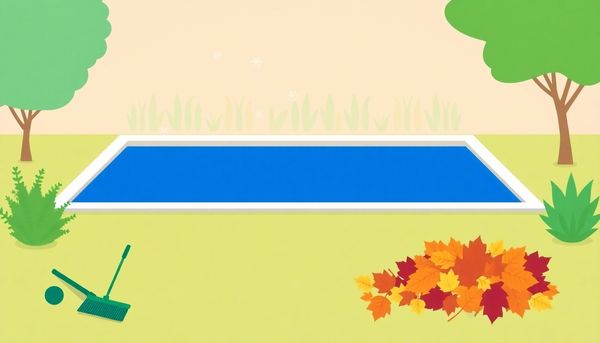
Winter may cloak your pool in silence, but beneath the surface, there's a silent battle against algae. While freezing temperatures offer a natural pause in algae growth, unseasonably warm spells can tip the scales back in favor of the green invaders. To keep your pool water pristine and ready for the spring thaw, a proactive approach is crucial.
One effective ally in this fight is a reliable algaecide. Opt for a copper-free variant that promises longevity, persisting in the water long enough to fend off unwelcome guests. On the final day before closing, incorporate this into your pool routine. Run the pump for a full 24 hours to ensure thorough circulation, then confidently shut down the system for the season. This simple step lays the groundwork for a hassle-free reopening.
Throughout the winter, keep an eye on the weather and remain vigilant. If warmer days appear on the horizon, don't hesitate to add a little extra algaecide under the cover. This layer of protection acts like a security blanket, preventing algae from even thinking about setting up camp.
A personal tip? Consider the algaecide as your pool's silent guardian. Though it may not eradicate existing algae, its presence is a powerful deterrent against new growth. With this strategy, you'll greet spring not with a murky mess, but with water that invites you back for another season of carefree swimming.
The chill of winter might make you forget about pool care, but ensuring your aquatic oasis remains in pristine condition demands attention all year round. One often underestimated hero of winter pool maintenance is algaecide. Though algae seem like a summer headache, a string of unexpectedly warm days in the off-season can spur growth beneath that pool cover. This is why introducing an algaecide before going into full winter hibernation is so crucial.
I recall a particularly mild winter when I decided to skip my usual algaecide routine, thinking the frigid nights would ward off any algae intruders. Come spring, I faced an unwelcome green surprise. Since then, I always add a long-lasting, copper-free algaecide on the last active pool day. Running the pump for a full 24 hours ensures the solution circulates completely, giving it the best chance to protect your water.
If you're worried as winter progresses, there's no harm in sneaking some algaecide under the cover during a thaw. It won’t kill existing algae, but it’s a stalwart defender against new growth. Embrace the habit of this little preventative measure, and your spring pool opening will be less of a chore and more of a celebration. In the grand scheme of pool care, a bit of algaecide can save you a world of hassle.
When the chill of winter sets in, one might be tempted to forget about the pool until the first warm days of spring. However, maintaining optimal water levels during the off-season is crucial for preserving your pool's integrity. In warmer climates, where freezing isn't a concern, keeping the pool filled almost to the brim helps to protect the pool liner from drying out and cracking. On the other hand, if you reside in a region where temperatures plunge, it's wise to lower the water level to four to six inches below the skimmer. This precaution prevents potential ice damage to your skimmer and the surrounding plumbing.
Years ago, neglecting this simple step cost me dearly—a few cracked pipes and a hefty repair bill. So, now, I religiously check and adjust water levels as the seasons change. It’s a small task that offers immense peace of mind. Additionally, keeping an eye on the water level prevents the cover from sagging into the pool, which can lead to a soggy mess that attracts debris and critters. Remember, a little attention to detail in winter can save you hours of tedious cleanup come spring. Whether you're bracing for snow or enjoying mild winters, maintaining the right water level is one tip you shouldn't overlook in your pool care routine.
When leaves have fallen and the temperatures have dipped, the urge to leave pool maintenance on the back burner until spring is strong. However, giving your pool surfaces a thorough clean during the off-season is a secret weapon for a hassle-free reopening. Rather than letting grime and algae take hold, regularly skimming and brushing the surfaces can keep your pool in great shape without the headaches come springtime.
Take a cue from my own winter routine. Every couple of weeks, even when the air carries a bite, I grab my skimmer and tackle the inevitable collection of leaves and debris on the pool surface. It’s a quick task that prevents a stubborn mess later. Pay special attention to the less obvious spots: behind ladders, around steps, and those tricky corners where algae love to settle in stealth mode during the off months.
While you're at it, check those skimmer baskets and pump baskets. Clearing them regularly ensures they don’t become debris traps, which can later lead to murky water or even equipment damage. A clean basket promotes healthy water circulation and saves your pump from working overtime.
In colder climates, keep an eye on the water level, adjusting as necessary. For warmer regions, keeping the water nearly topped up is wise. Just a small investment of your time will make that spring pool opening much smoother, allowing you to jump into crystal-clear waters as soon as the sun calls you back.
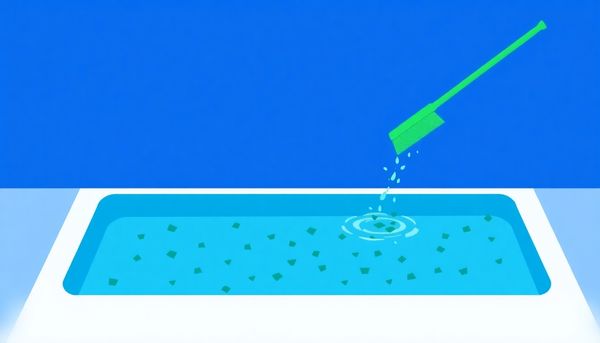
Have you ever thought of your pool's water level as a silent guardian against the harshness of winter? While that sounds a bit theatrical, maintaining appropriate water levels can genuinely prevent a cascade of costly problems. Each season brings its own set of challenges, and as temperatures drop, water expands. This means that excess water can freeze, exert pressure, and potentially damage the pool's structure or plumbing.
Before winter fully settles in, make sure to lower the water level about four to six inches below the pool skimmer. This small adjustment can save you from the heartache and expense of cracked pipes or damaged skimmers. If you live in a milder climate, you might not need to drain quite as much, but it's still essential to keep a careful eye on the water level to accommodate any winter rains.
In addition, regularly removing accumulated rainwater or melting snow from the pool cover is equally crucial. A cover that sags under the weight can allow debris or even animals to sneak in, compromising water quality and safety. A simple sump pump can be your best friend here, keeping everything manageable.
Finally, remember that maintaining water levels is not a one-time task; it's an ongoing commitment throughout the winter months. Consistent monitoring ensures that when spring arrives, your pool is ready to welcome you back without any unpleasant surprises.
As the summer sun fades, the task of keeping your pool pristine doesn’t simply hibernate. One critical line of defense against murky waters is the use of algaecide. Though the chilly air might lull you into thinking your pool is safe from algae, a few unseasonably warm days can quickly stir an unwanted bloom. Unlike the typical poolside splash of summertime maintenance, using algaecide is a subtle yet powerful strategy during the off-season.
Consider this more as a prevention ritual than a reactionary measure. On the final day of your pool’s active season, pour in a long-lasting algaecide and let your pump run for a full day. This ensures thorough circulation, so the protective agent coats every corner of your pool before the circulation system is shut down. It’s almost like arming your pool with a shield for the winter slumber.
What’s particularly convenient is that if concern over algae strikes mid-winter, you’re not without options. You can still add algaecide beneath your pool cover. While some might view this as overkill, you’ll appreciate the foresight when your pool is easier to open come spring. So, think of algaecide as your pool's winter blanket—keeping it snug and free of that pesky green menace until the sun beckons swimmers once more.
Winterizing your pool goes beyond simple cover-up solutions; it’s about ensuring the longevity of the entire system. One crucial step involves inspecting and draining your pool equipment. When the crisp autumn air settles in, it's time to check the heart of your pool—the pump, heater, and filter. These components are the lifeline of your pool, and neglecting them could lead to costly repairs come spring.
Ensure that all drain plugs are removed from the pump, heater, and filter. This simple act prevents rainwater or condensation from accumulating and freezing inside, which could crack the equipment. You wouldn't leave your car out in a hailstorm without protection, and your pool deserves the same care and attention.
Draining the water to 4–6 inches below the skimmer is another essential task. This precautionary measure helps avert any freezing in the pipes that might lead to expensive damage. Speaking from experience, a ruptured pool pipe can become a homeowner's nightmare—one that haunts both peace of mind and the wallet.
Moreover, don't overlook the pool cover. Standing water on top can freeze, exerting undue pressure on your protective shield. Using a sump pump or a winter cover pump to remove any water can save you from a potential winter mishap. By taking these mindful steps, you set the stage for a seamless and stress-free pool opening when warmer days return.
When the swimming season wraps up and winter’s chill sets in, your pool still demands attention to ensure a seamless reopening when spring rolls around. One crucial aspect of off-season pool care is managing water levels and debris. A close friend of mine learned this the hard way. After neglecting his pool one winter, he discovered a cracked pipe due to improper water levels—an expensive lesson in pool maintenance.
In colder climates, ensure your pool water is lowered four to six inches below the skimmer. This prevents freezing water from damaging pipes and equipment. For those in milder regions, maintaining nearly full water levels helps avoid drying out the liner or plaster. Regularly checking the water level prevents any nasty surprises when temperatures drop or rains pour.
Debris, on the other hand, loves to pile up on pool covers during winter. A robust air pillow positioned beneath the cover can be a game-changer. Not only does it protect the pool structure from snow and ice but also nudges debris toward the edges, simplifying cleanup. Every few weeks, grab a pool skimmer to clear off leaves and sticks, ensuring they don’t end up as a soggy mess come spring.
Focusing on these simple maintenance steps creates a less stressful pool opening and keeps your backyard oasis in prime condition, ready for those first warm days.
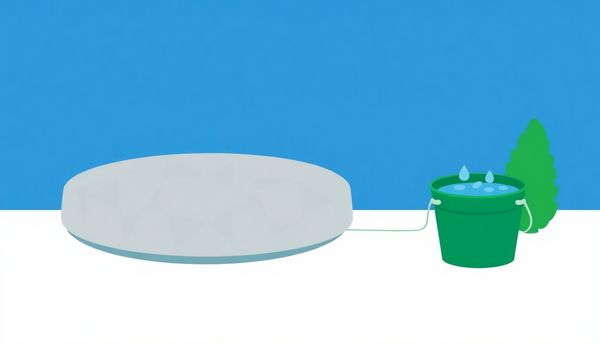
When the chill of winter creeps in, it signals the onset of a different kind of pool care routine. The secret to making spring pool opening a breeze lies in wisely selecting and using winterizing products. Unlike summer, when pool maintenance is defined by constant vigilance, winter demands a more strategic approach. Begin by understanding the specific needs of your pool based on climate and cover type. For instance, living in a warmer climate might mean surprise warm spells, which can encourage algae growth. Choosing a long-lasting algaecide, ideally one that's copper-free to prevent staining, can be your first line of defense.
In colder climates, the use of biocidal products that remain active throughout the winter is crucial. These products typically halt the growth of algae and bacteria, ensuring your pool water remains pristine under the cover. But here’s a personal tip from years of pool care experience: don’t solely rely on chemicals. Incorporate enzyme treatments to break down non-living organic material, like pollen or bird droppings, that sneak past your cover. This step not only prevents unsightly scum lines but also reduces the workload when opening the pool.
Finally, timing is everything. Add these products just as temperatures dip to ensure they’re effective throughout the season. By wisely integrating these winterizing products into your routine, you'll be setting up your pool for a seamless transition back to life when warm days return.
While the pool may seem peacefully dormant under its winter cover, a silent battle can brew beneath the surface. Algae, unwelcome guests in any pool, can disrupt this tranquility if given the chance. Algaecides are your secret weapon in this off-season skirmish. Even though freezing temperatures tend to hinder algae growth, a few unusually warm winter days can encourage these microscopic adversaries to multiply. Selecting an algaecide that remains effective over time is essential.
On closing day, adding algaecide to your pool can save you from headaches come spring. Allow the pool pump to run for 24 hours after adding the algaecide to ensure thorough distribution. With the pump off and the cover secured, you can rest easy knowing your pool is well-guarded. Should unseasonably warm weather persist, applying algaecide under the cover during the winter months can provide additional peace of mind.
Copper-free algaecides offer a particularly smart choice. They prevent algae growth without the risk of staining common to copper-based products. Having experienced the grim sight of algae blooms in my own pool one spring, I can attest to the wisdom of preemptive strikes. The clearer waters and smoother startup are worth every precaution taken during the off-season. This seemingly small step can make a world of difference, ensuring your pool remains an oasis of calm when warmer days return.
When the cold winds begin to howl and frost nips at your nose, it’s not just your wardrobe that needs protection. Your pool equipment is also at risk from the icy clutches of winter. Freezing temperatures can wreak havoc on your pool’s mechanical systems if precautions aren't taken. First and foremost, ensure your pump, heater, and filter are properly drained. The consequences of water left in these components can be disastrous, as freezing can cause pipes to crack and equipment to fail, leading to costly repairs.
Remember that extra water should be drained from the pool—typically 4 to 6 inches below the skimmer. This simple step helps prevent water from freezing in the skimmer and the pump, which can cause significant damage. Additionally, remove any residual water from your pool cover using a sump or winter cover pump. Allowing water to freeze atop your cover can strain it and the pool’s structure.
From personal experience, I’ve found that covering your pool and equipment snugly can be a game-changer. A good pool cover acts as the first line of defense, keeping out debris and unwanted critters. Don't forget to check the fit and condition of your pool cover periodically. If your cover is loose or damaged, it may allow cold air and elements to affect the water and equipment underneath. Safeguarding your pool’s vital components during the off-season ensures that come spring, you’ll be ready to dive back in with minimal hassle.
Wintertime can often lull pool owners into a false sense of security, convincing them the water is safely dormant until spring. Yet, managing water levels correctly during the colder months is crucial for your pool's health. Picture this: snowflakes gently blanket your garden, and while the scene is serene, an unmonitored pool water level can spell trouble beneath the surface.
First, consider your region's climate. In areas where winters are mild and snow is a rarity, you might keep water levels closer to the top. However, if you live where Jack Frost reigns supreme, lowering the water four to six inches below the skimmer can prevent costly freeze damage to your pool's pipes and accessories. This small adjustment helps shield your pool from the silent but formidable power of expanding ice.
A friend once learned the hard way, ignoring the water levels during a particularly harsh winter. Come spring, a cracked pipe awaited him, resulting in an unexpected expense. To dodge such mishaps, make it part of your winter routine to check water levels periodically. Remember, consistent monitoring helps maintain the priming of pumps and ensures the longevity of your pool.
Additionally, keep an eye on the water accumulating on your pool cover. Use a cover pump to remove excess water, preventing strain and potential tears. By spending a few minutes each week managing these details, you ensure a smooth transition back to sunny days and poolside fun.
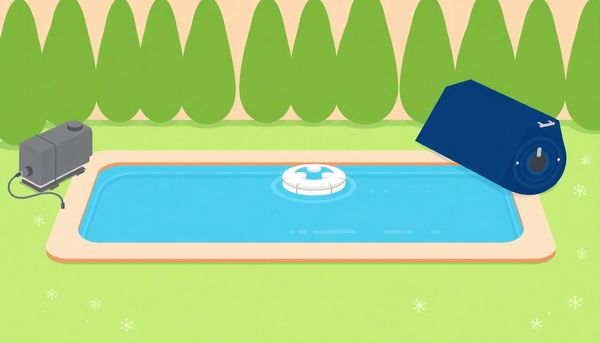
Winter's chill doesn't just transform your backyard pool into an icy pond; it demands attention to the equipment that keeps your watery oasis running smoothly. When the last splash of summer has faded, safeguarding your pool gear is crucial to avoid costly repairs come spring. Begin by ensuring all your pool equipment—like pumps, filters, and heaters—are thoroughly drained. This step prevents any trapped water from freezing and expanding, which can crack pipes and damage components.
Remove drain plugs from all machinery to allow complete drainage. It’s a bit like leaving a faucet trickling during a freeze—an ounce of prevention. For added protection, consider covering these critical pieces with weather-resistant materials to shield them from harsh elements. In my own experience, tossing an old tarp over the pool pump and filter was a lifesaver against unexpected winter storms.
Take the time to check each piece of equipment for signs of wear and tear. Tighten loose screws and replace any worn-out gaskets to seal out moisture. Also, store detachable parts like pressure gauges or thermometers indoors to prevent theft or weather damage.
Lastly, don't overlook your pool accessories—ladders, diving boards, and even cleaning tools. Store these items in a dry, temperature-controlled environment to extend their lifespan. As temperatures rise again, you'll find your pool equipment ready to dive back into action, saving you both time and money.
When winter's chill sweeps in, pool care often seems like a distant memory. Yet, a key to easing the spring startup lies in preventing algae growth during these colder months. Algaecide becomes the unsung hero of your off-season maintenance toolkit. Unlike the relentless heat of summer, winter's cooler temperatures do not invite algae, but a rogue warm spell can change that in a heartbeat. This is where a long-lasting algaecide can make all the difference.
Select an algaecide that won't vanish into thin air—one that maintains its presence for weeks. On your pool's final operational day, introduce the algaecide into the water and ensure the pump circulates it thoroughly for 24 hours. This allows the solution to permeate every inch, creating a hostile environment for algae spores. Once fully mixed, shut down your system with peace of mind, knowing you've taken a proactive step against unwelcome green invasions.
For added security, don’t hesitate to sneak some algaecide in under the pool cover during winter. That way, those occasional sunny days won’t catch you off guard. A copper-free algaecide is a fantastic choice, especially if you're mindful of avoiding metal staining. Algae may not be in full bloom during winter, but staying a step ahead ensures that your spring pool opening is as smooth and hassle-free as a lazy summer float.
Winter’s chill can be relentless, threatening to wreak havoc on pool equipment if not properly attended to. Draining and protecting your pool's heart and soul—the pump, heater, and filter—can save you from costly repairs come springtime. Imagine the surprise of a cracked pipe resulting from frozen water expansion—an unwelcome addition to any pool owner's to-do list. To avoid this, ensure all drain plugs are removed, allowing any lingering water to escape from the equipment. A friend once ignored this step and spent the first warm days of spring addressing a costly repair instead of lounging poolside.
Maintaining a safe water level is equally crucial. Lower the water four to six inches below the pool skimmer. Excess water, if left unchecked, can freeze and damage skimmers and plumbing, setting you back both in time and finances. It's like a small insurance policy, safeguarding your pool’s plumbing like keeping your car's tires filled during a cold snap.
For those with an outdoor cover, a sump pump becomes your best ally. It diligently removes water that accumulates atop, preventing ice formation and potential cover damage. Remember, a well-fitted cover serves as a barrier against the elements, reducing the need for extensive cleanup later. By taking these precautions, you ensure that your pool equipment emerges from winter hibernation unscathed, ready for a new season of fun.
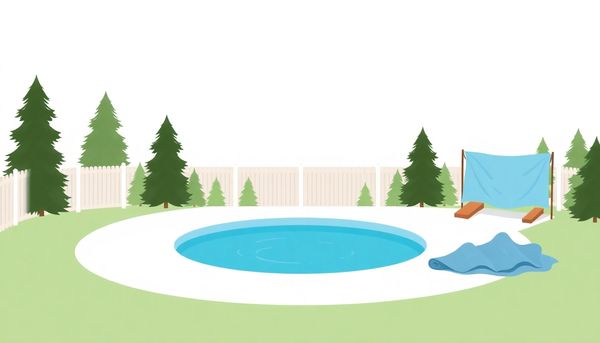
This article provided insights into maintaining your pool. Start your pool care journey today!
Want to become a pool maintenance expert? Our free Pool School course covers everything you need to know about pool care. From basic maintenance to advanced troubleshooting, you'll learn how to:
Join over 10,000 pool owners who have already transformed their pool care routine. Get started with our free Pool School course today!